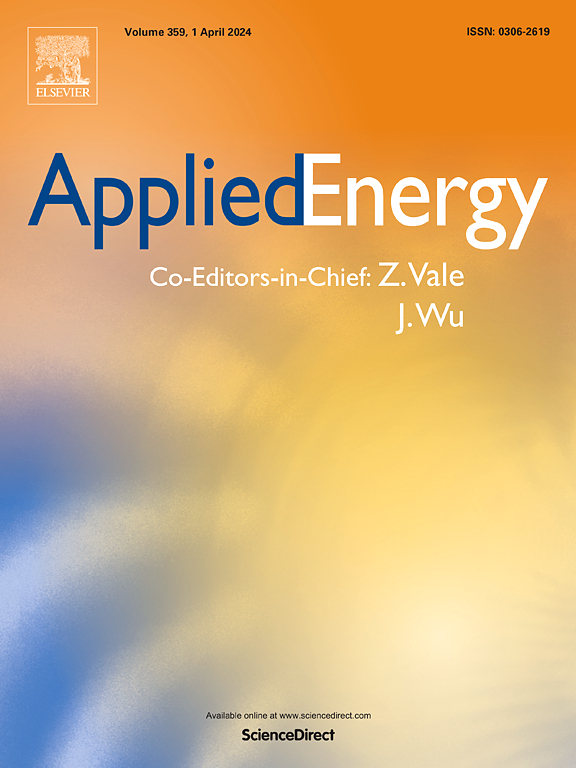Harnessing anisotropy of phase change composites for taming thermal runaway and fast charging of lithium-ion batteries
IF 10.1
1区 工程技术
Q1 ENERGY & FUELS
引用次数: 0
Abstract
Regulating temperature uniformly below self-ignition point in lithium-ion battery (LIB) is paramount for optimal performance and to avert potential thermal runaways. Localized heat accumulations or hot spots underscore the need for effective thermal management, demanding a delicate balance between rapid heat expulsion to an external sink and limiting heat propagation between neighboring cells using interstitial sheets typically placed between cells. This study presents a novel strategy employing laminate composites with dual thermal conductivities (k): high kIn-plane for efficient heat expulsion and low kOut-of-plane to curb heat spread. The approach exploits laminate anisotropy to passively address the challenges of managing hot spots during fast charging and preventing thermal runaway propagation. High k composites, while prompt in heat transfer, can inadvertently trigger thermal runaway by propagating heat to neighboring cells. Conversely, low k composite hinder dispersion, causing severe heat accumulation. The proposed dual k approach strikes a balance, optimizing heat dissipation to a sink while restricting heat propagation between the cells. Expanded graphite promotes the in-plane thermal conduction while air gap in between reduces the out-of-plane heat conduction. Our results suggest that interstitial composites with high anisotropy whose kIn-plane and kOut-of-plane are 30 and 0.5 W·m−1·K−1, respectively, could mitigate thermal runaway propagation, maintaining the surface of adjacent cells below the self-ignition temperature of 200 °C. Our findings underscore the importance of customizing the thermal properties of interstitial materials to efficiently balance heat transfer in LIBs, especially under abuse conditions. This customization is vital for enhancing the thermal management and overall safety of these battery systems. The proposed approach contributes to the safe and reliable deployment of LIBs across diverse applications.
求助全文
约1分钟内获得全文
求助全文
来源期刊

Applied Energy
工程技术-工程:化工
CiteScore
21.20
自引率
10.70%
发文量
1830
审稿时长
41 days
期刊介绍:
Applied Energy serves as a platform for sharing innovations, research, development, and demonstrations in energy conversion, conservation, and sustainable energy systems. The journal covers topics such as optimal energy resource use, environmental pollutant mitigation, and energy process analysis. It welcomes original papers, review articles, technical notes, and letters to the editor. Authors are encouraged to submit manuscripts that bridge the gap between research, development, and implementation. The journal addresses a wide spectrum of topics, including fossil and renewable energy technologies, energy economics, and environmental impacts. Applied Energy also explores modeling and forecasting, conservation strategies, and the social and economic implications of energy policies, including climate change mitigation. It is complemented by the open-access journal Advances in Applied Energy.
 求助内容:
求助内容: 应助结果提醒方式:
应助结果提醒方式:


